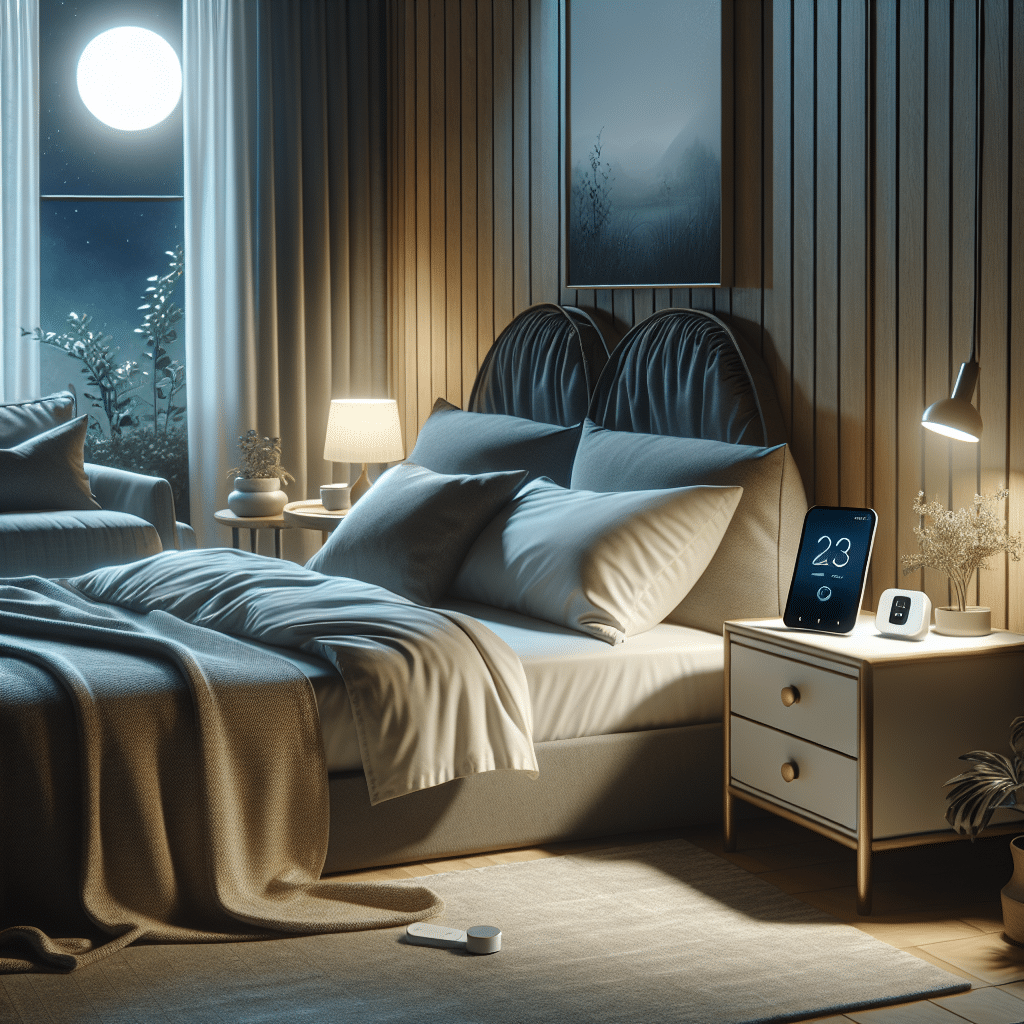Understanding Sleep Sensors in the Bedroom Environment
1. What Are Sleep Sensors?
Sleep sensors are advanced technological devices designed to monitor various elements affecting sleep quality. These sensors collect data on factors such as body movements, heart rate, breathing patterns, and even environmental conditions—such as room temperature, humidity, and light levels. Sleep sensors can be standalone devices or integrated into smart beds, wearables, and various home automation systems.
2. Importance of Sleep Quality
Quality sleep is vital for physical health, emotional well-being, and cognitive function. Insufficient sleep can lead to serious health issues, including obesity, heart disease, and depression. Understanding how your sleeping environment affects sleep can help make necessary adjustments to improve sleep quality. This is where sleep sensors play a crucial role.
3. Types of Sleep Sensors
3.1 Wearable Sleep Sensors
Wearable devices like smartwatches and fitness bands track sleep by monitoring physiological signals. They often provide insights into sleep cycles, including light, deep, and REM stages, and calculate overall sleep quality.
3.2 Non-Wearable Sleep Sensors
Non-wearable options include devices that are placed under the mattress or on a bedside table. These sensors use radar or infrared technology to analyze movements and sleeping patterns without physically touching the user.
3.3 Environmental Sleep Sensors
These sensors monitor environmental factors impacting sleep quality, such as noise levels, light exposure, humidity, and temperature. By creating a comfortable sleeping environment, these devices help promote uninterrupted sleep.
4. Features of Sleep Sensors
4.1 Real-Time Monitoring
Most sleep sensors provide real-time data analysis, allowing users to receive immediate feedback on their sleep habits and make changes accordingly.
4.2 Multi-Parameter Tracking
The best sensors track multiple parameters concurrently, providing comprehensive insights. For instance, monitoring both heart rate and breathing can reveal stress levels affecting sleep.
4.3 Sleep Stage Identification
Advanced sleep sensors analyze different sleep stages—light, deep, and REM. Understanding these phases helps users adjust their sleep patterns for better overall rest.
4.4 Connectivity and Integration
Many sleep sensors can connect to smartphone apps or smart home systems. This integration allows users to receive detailed sleep reports, set alarms, and control environmental factors like lighting and heating based on sleep analysis.
5. How Sleep Sensors Work
Sleep sensors operate using various technologies. Wearable sensors often include accelerometers to detect body movements and heart rate monitors to gauge physiological responses. Non-wearable sensors use predictive algorithms and motion detection to provide data without physical contact.
Most devices rely on mobile apps that analyze the collected data, offering insights and suggestions for optimizing sleep quality based on the user’s unique sleep patterns.
6. Benefits of Sleep Sensors
6.1 Improved Sleep Hygiene
By providing insights into sleep patterns, sleep sensors help users identify habits that disrupt sleep, promoting better sleep hygiene practices.
6.2 Personalized Sleep Solutions
Understanding one’s unique sleep data allows for tailored solutions—such as adjusting bedtime routines or changing bedroom environments.
6.3 Tracking Health Metrics
Sleep sensors can also offer broader health insights, tracking data relevant for physical activity and emotional well-being, linking better sleep with improved health outcomes.
7. Choosing the Right Sleep Sensor
When selecting a sleep sensor, consider the following criteria:
7.1 Accuracy
Review product specifications and seek devices with high accuracy in monitoring sleep patterns and physiological responses.
7.2 User-Friendliness
Opt for sensors with intuitive apps that provide easy navigation and clear insights into your sleep data.
7.3 Additional Features
Look for sensors that offer added benefits, such as environmental monitoring, integration with smart home devices, and customizable sleep coaching programs.
7.4 Budget Consideration
Sleep sensors can vary significantly in price. Assess your needs and budget to find a device that offers the best value without compromising quality.
8. Environmental Factors Affecting Sleep
8.1 Temperature Control
Optimal bedroom temperature (typically between 60-67°F or 15-19°C) is crucial for quality sleep. Excessive warmth or cold can disrupt sleep cycles, making temperature sensors valuable additions.
8.2 Noise Management
Loud noises or disruptive sounds can lead to fragmented sleep. Sensors detecting sound levels can alert users to adjust their sleep environment using white noise machines or soundproofing.
8.3 Light Exposure
Light levels can profoundly impact melatonin production. Sleep sensors that monitor ambient light can help users adjust room lighting to promote better sleep.
8.4 Humidity Levels
High humidity can lead to discomfort during sleep. Monitoring humidity using dedicated sensors can provide insights for maintaining a comfortable sleeping atmosphere.
9. Conclusion
Understanding the significance of sleep sensors in creating an optimal sleep environment is essential for anyone aiming to improve their sleep quality. By monitoring various physiological and environmental factors, these devices empower users to make informed decisions about their sleep habits and surroundings. With advances in technology, sleep sensors not only enhance personal sleep hygiene but also contribute to overall well-being.
